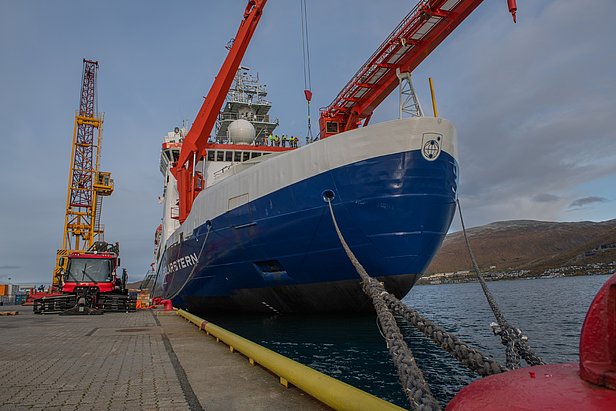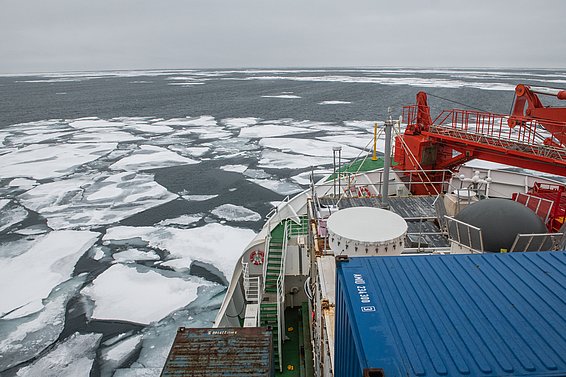14.11.2019 | Logbook
Author ¶
David Wagner
Moving into the Arctic Ocean: SLF researcher David Wagner is taking part in the first stage of the Multidisciplinary drifting Observatory for the Study of Arctic Climate (MOSAiC) expedition with the German research vessel Polarstern. The expedition team's first challenge was to find a suitable ice floe for their stay.
On 14 September – after months of planning, anticipation and countless meetings and discussions – I finally headed to Tromsø in northern Norway, where a few days later, on 20 September, the Polarstern icebreaker would set sail on its big MOSAiC expedition. A week of listening to safety briefings and loading the ship lay ahead. This was a very exciting time for me, as it was beginning to sink in that things were about to start in earnest. I practically went weak at the knees when I saw the ship being loaded in the harbour! I felt our week in Tromsø was important too, though, as it gave us a chance to develop a 'MOSAiC spirit' and get to know other participants. In our time there, we also set up the micro-CT scanner, the measuring device that we'll be using to take our Arctic snow measurements. This was rather a tortuous process, but we wound up with a satisfactory result.
Hectic times before departure ¶
The last three days before the start of the expedition saw a real media scrum on the Polarstern, and I gave a number of newspaper and radio interviews. On the day we set sail, there was a farewell event attended by several Norwegian and German ministers. After a couple of drinks in the heated tent by the harbour, we got on board the ship, which finally, with a great clatter, put to sea at around nine o'clock in the evening local time. As it did so, we felt rather a sense of relief: finally we had peace and quiet, and it was time for our first evening meal at sea.
The ship now moved through the Barents Sea towards the northern tip of the Siberian island of Novaya Zemlya. For days the vessel battled through strong winds and even storms, with waves up to seven metres high. I was taking tablets to prevent seasickness, so I managed to avoid getting ill. Unfortunately, the vessel's stabilisers, which counteract any rolling, had been removed at the shipyard in Bremerhaven – probably to protect the ship from ice pressure. Turbulent sea conditions for days on end can really take their toll on you.
After about five days, we reached the ice edge to the north of Severnaya Zemlya. We put the treacherous seas behind us, and I got my first glimpse of Arctic sea ice. It was a fascinating sight, as I'd only ever seen it in documentaries before. However, there was a lot of fog and bad weather in this area too. It wasn't long before we caught sight of our first polar-bear tracks and eventually our first bear. We also watched a walrus flee the Polarstern by slipping down from a floe and diving into the water.
Search for a suitable ice floe
We then moved further into the thickening ice to the north, to find a suitable floe where we could lay anchor. This wasn't an easy search: due to climate change, there seems to be little perennial ice left in the region. We ended up spending a while at one of the few floes that seemed suited to our needs, with a total horizontal area of about 3.5 × 2.5 kilometres. In the middle there is a strong 'fortress' of thick perennial ice with an area of around 1 ×2 kilometres, featuring occasional ridges up to 5 metres thick. Surrounding this is mostly flat, thin ice (with a thickness of about 30 cm) consisting of frozen melt ponds. The floe's conditions aren't absolutely ideal because the ice is actually pretty thin in many places. This means that it isn't stable enough everywhere to ensure that every part of the floe will be able to withstand forces acting on it repeatedly. However, it's the best floe we've found so far.
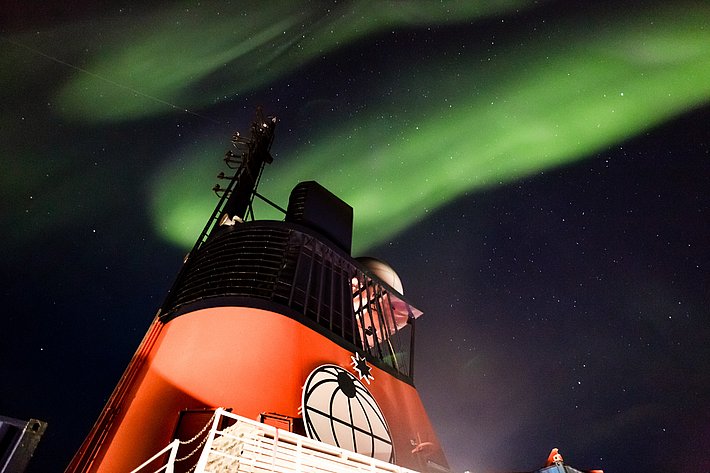
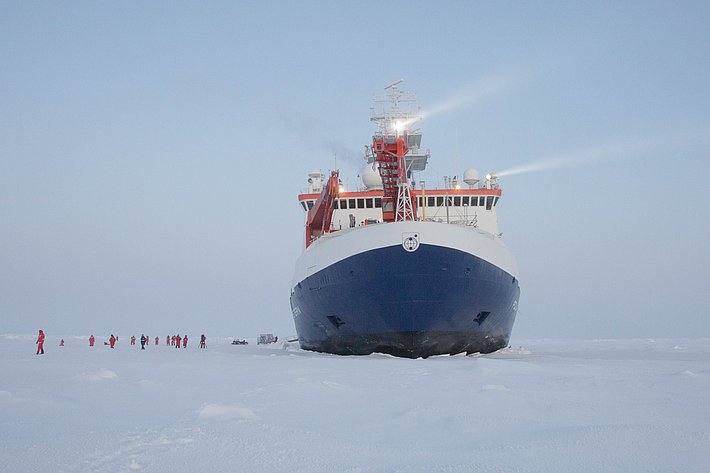
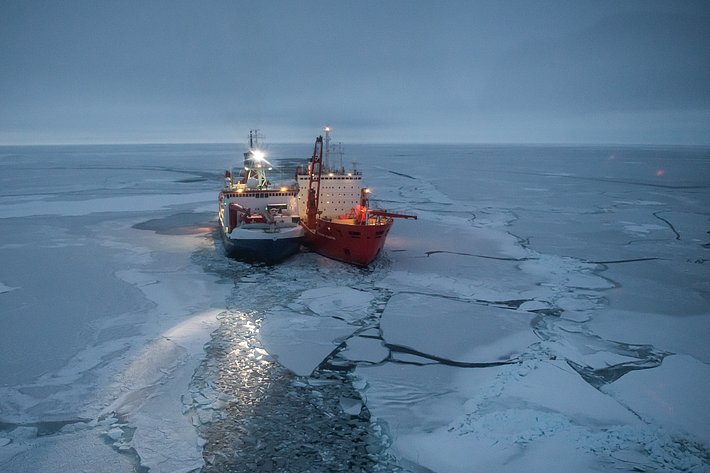
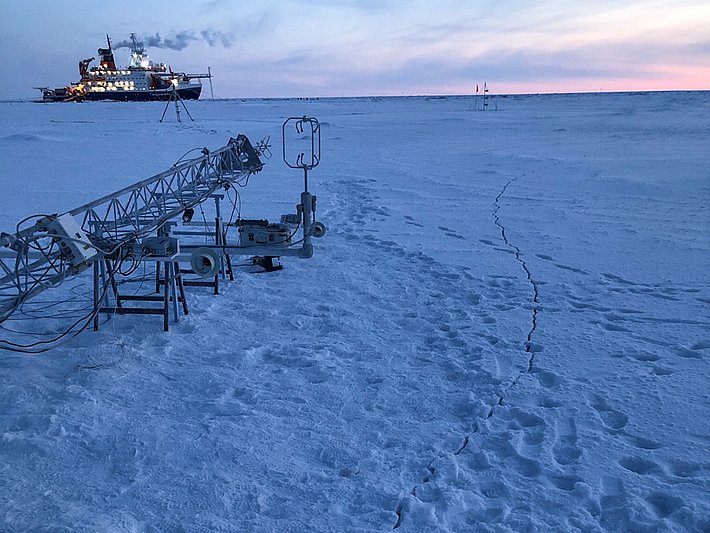

After some days exploring the area, we met the Russian research vessel Akademik Fedorov, which is also involved in the expedition. It would spend the next few weeks for setting up the distributed network: a network of monitoring stations within a radius of up to 50 km of the Polarstern. Akademik Fedorov also had cargo and fuel on board for the Polarstern.
After liaising with the team from the Russian ship, a decision was made to moor at the floe that we'd spent several days studying in detail. The Polarstern was anchored to the floe with steel cables. So we've now found our home for the next few months! We've already had our first very close encounter with a mother polar bear and her son. The two bears and the dynamics of the ice are likely to cause us some problems as time goes on.

